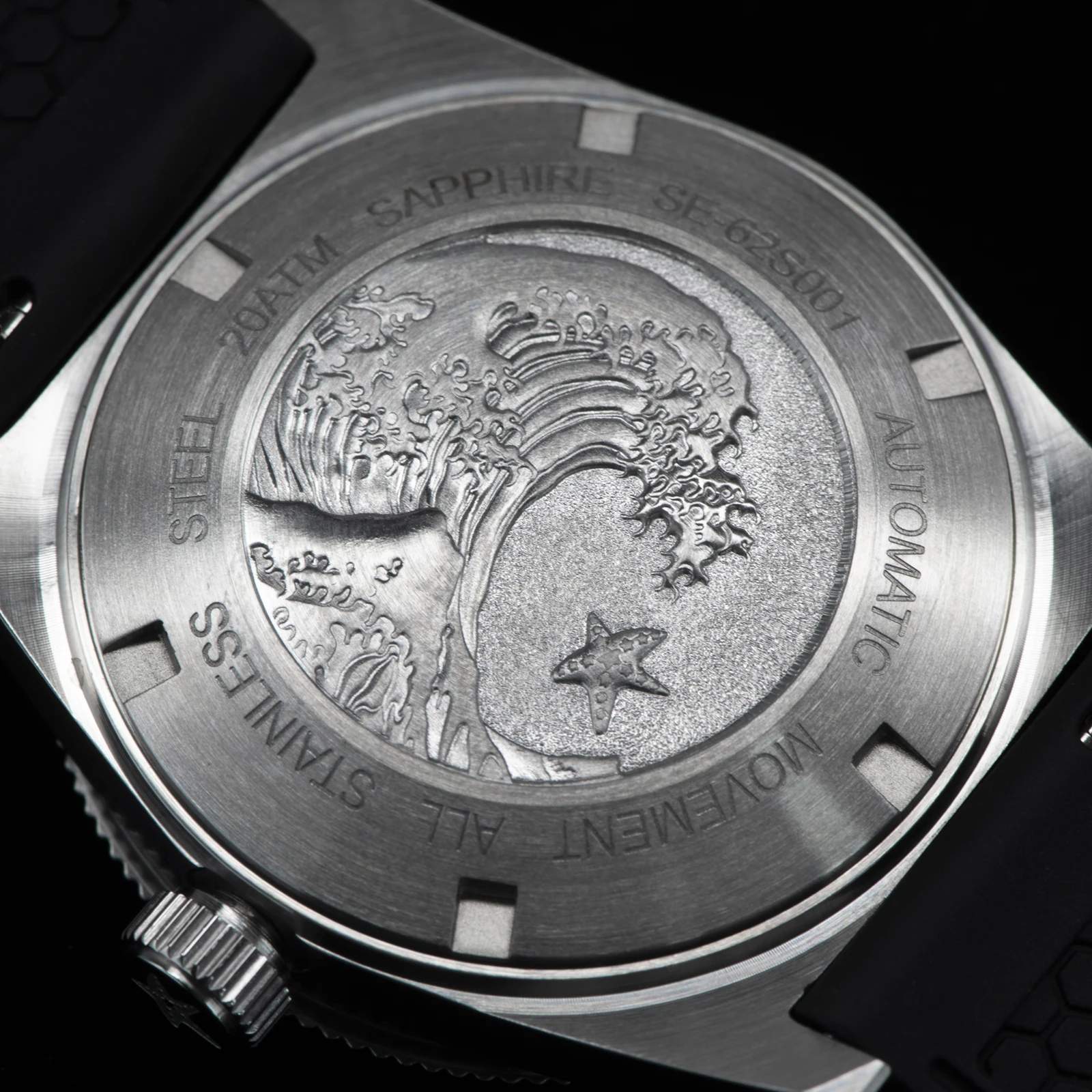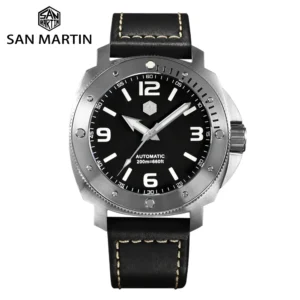Understanding Titanium’s Appeal in Modern Watchmaking
Titanium has emerged as one of the most sought-after materials in premium watchmaking, offering a compelling combination of qualities that traditional metals simply can’t match. This lightweight metal weighs approximately 40% less than stainless steel, making even larger watch designs comfortable for all-day wear. Beyond its feather-light feel, titanium offers several distinct advantages:
- Hypoallergenic properties ideal for sensitive skin
- Superior corrosion resistance, even in saltwater environments
- Modern, distinctive gray appearance with subtle warmth
- Exceptional strength-to-weight ratio
For watch enthusiasts and collectors, scratch resistance ranks among the most critical considerations when investing in a timepiece. After all, watches are meant to be worn, and daily wear inevitably leads to contact with doorframes, desk edges, and countless other potential hazards.
However, misconceptions abound regarding titanium’s true scratch resistance properties. While some marketing claims suggest near-invulnerability, the reality is more nuanced. Titanium isn’t scratch-proof—no watch material truly is—but its unique properties affect how it handles and displays wear compared to other common watch case materials.
The history of dive watch engineering reveals how watchmakers have continuously sought better materials to enhance durability. Understanding the ultimate guide to titanium watches helps appreciate why this metal has become increasingly prominent in horological circles. Today’s titanium automatic watches showcase the material’s versatility across different styles and price points.
The Science of Scratch Resistance: How Material Hardness Works
To understand how titanium performs against scratches, we need to grasp the fundamental science behind scratch resistance. In material science, scratch resistance directly correlates to a material’s hardness—its ability to resist permanent deformation when a force is applied to its surface.
Two primary scales measure material hardness in the context of watches:
Mohs Scale (1-10): A simple ordinal scale where higher numbers can scratch lower numbers. Diamond tops the scale at 10, while talc sits at 1. Everyday items like fingernails rank around 2.5, while glass measures approximately 5.5.
Vickers Hardness (HV): A more precise measurement used by watchmakers and material scientists. This test measures how resistant a material is to indentation under a specific load, providing numerical values that allow for more detailed comparisons.
It’s crucial to distinguish between three related but different properties:
- Hardness: Resistance to scratching and indentation
- Toughness: Ability to absorb energy without fracturing
- Strength: Ability to withstand force without permanent deformation
This distinction explains why ceramic watch cases can be extremely hard (highly scratch resistant) yet potentially brittle (low toughness), while titanium balances moderate hardness with excellent toughness.
The term “scratch-proof” is essentially marketing hyperbole—no watch material is truly immune to scratches. Even sapphire crystal, with its impressive hardness, can be scratched by materials like diamond. Setting realistic expectations is essential for any watch owner concerned about maintaining their timepiece’s appearance.
The evolution of dive watch technology demonstrates how material science has continuously improved to balance these properties, creating watches that can withstand increasingly demanding conditions.
Titanium’s Unique Material Properties Affecting Scratch Behavior
What makes titanium’s scratch behavior particularly interesting is its formation of a natural oxide layer (TiO₂) upon exposure to oxygen. This microscopically thin protective barrier forms spontaneously and provides several benefits:
- Acts as the first line of defense against minor surface abrasions
- Contributes significantly to titanium’s exceptional corrosion resistance
- Regenerates when damaged, providing a limited “self-healing” effect for very minor scratches
- Creates a distinctive matte appearance that helps disguise minor wear
Unlike stainless steel, titanium possesses unique elastic properties that allow it to “give” slightly under pressure before returning to its original shape. This characteristic means that titanium can sometimes absorb impacts that might permanently mark other metals.
When titanium does scratch, the marks often appear different than on other watch case materials. Titanium scratches typically have a chalky, whitish appearance rather than the shiny scratches seen on polished steel. This occurs because the scratch exposes the raw titanium beneath the oxide layer, creating a visual contrast against the darker oxidized surface.
These distinct properties make titanium particularly well-suited for watches designed for active lifestyles. Understanding why titanium is used in watches helps explain its growing popularity among manufacturers creating timepieces meant for regular wear in challenging environments. Many professional spec dive watches leverage these properties for enhanced durability in extreme conditions.
Titanium Grades in Watchmaking: Impact on Scratch Resistance
Not all titanium watches offer identical scratch resistance. The specific grade of titanium used significantly impacts performance, with higher grades generally providing better durability:
| Titanium Grade | Composition | Vickers Hardness | Typical Applications |
|---|---|---|---|
| Grade 2 (Commercially Pure) | >99% Ti | 180-220 HV | Entry to mid-range titanium watches |
| Grade 5 (Ti-6Al-4V) | 90% Ti, 6% Al, 4% V | 320-380 HV | Premium sports and dive watches |
Grade 2 titanium (commercially pure) provides the classic lightweight benefits and corrosion resistance titanium is known for, but its relatively low hardness (around 210 HV) means it’s more susceptible to scratching than many stainless steels.
Grade 5 titanium, an alloy containing 6% aluminum and 4% vanadium, offers substantially improved hardness (typically 350 HV). This increased hardness translates directly to better scratch resistance in daily wear. The alloying elements strengthen the metal while maintaining most of the lightweight properties that make titanium desirable.
The improved performance of Grade 5 comes at a cost—it’s more expensive and difficult to machine than Grade 2, which is why many entry-level titanium watches use the commercially pure variant. Higher-end watch manufacturers often specify Grade 5 in their marketing materials as a selling point.
Beyond hardness values, the different grades also affect:
– Polishing capabilities and potential finishes
– Long-term color stability
– Ease of machining complex case designs
– Overall production costs
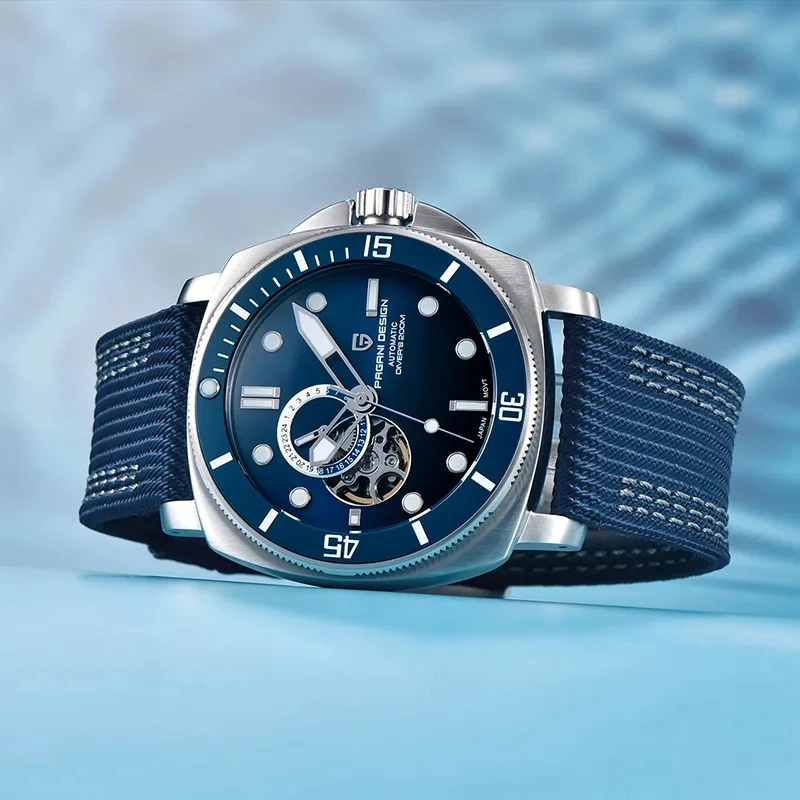
Material Showdown: Titanium vs. Other Common Watch Case Materials
How does titanium truly compare to other popular watch case materials when it comes to scratch resistance? This comparison helps set realistic expectations:
| Material | Vickers Hardness | Scratch Resistance | Other Properties |
|---|---|---|---|
| Grade 2 Titanium | 180-220 HV | Moderate | Very lightweight, hypoallergenic |
| Grade 5 Titanium | 320-380 HV | Good | Lightweight, stronger, costlier |
| 316L Stainless Steel | 200-240 HV | Moderate | Industry standard, heavier |
| 904L Stainless Steel | 220-250 HV | Moderate-Good | Premium watches, better corrosion resistance |
| Ceramic | 1,200-1,800 HV | Excellent | Virtually scratch-proof but brittle |
| Hardened Steel | 400-800 HV | Very Good | Heavier than titanium |
In practical terms, Grade 2 titanium and standard 316L stainless steel offer comparable scratch resistance, with steel potentially performing slightly better. Grade 5 titanium surpasses both standard steels in hardness but still falls significantly short of ceramic’s remarkable scratch resistance.
The visual appearance of scratches varies considerably across materials:
– Titanium scratches tend to be whiter and more noticeable against the darker metal
– Stainless steel scratches typically appear as bright lines against the polished surface
– Ceramic rarely scratches but can chip if impacted with sufficient force
– Bronze and copper-based alloys develop a patina that often incorporates scratches into their aging character
For outdoor enthusiasts and adventurers, the best materials for outdoor watch cases often involve tradeoffs between scratch resistance and other practical factors. Many rugged automatic watches use materials specifically chosen to withstand harsh conditions beyond just scratch considerations.
Enhanced Protection: Surface Treatments for Titanium Watch Cases
To overcome titanium’s natural hardness limitations, many manufacturers apply specialized surface treatments that dramatically improve scratch resistance:
Diamond-Like Carbon (DLC) Coating
– Forms an extremely hard carbon-based layer (1,000-3,000 HV)
– Creates a distinctive black appearance
– Provides excellent scratch protection against most everyday objects
– Can chip if subjected to significant impact, potentially requiring complete case refinishing
Physical Vapor Deposition (PVD) Coating
– Available in various colors including black, gold, and blue
– Moderately improves scratch resistance
– Primarily used for aesthetic purposes
– Generally less scratch-resistant than DLC but often more affordable
Proprietary Technologies
– Seiko’s Diashield: Increases surface hardness while maintaining titanium’s color
– Citizen’s Duratect/Super Titanium: Can achieve 1,000+ HV while preserving the lightweight properties
– Sinn’s Tegiment: Surface hardening technology that works with titanium or steel
While these treatments significantly improve scratch resistance, they come with tradeoffs:
– Additional manufacturing costs passed to consumers
– Potential repair difficulties if coating is damaged
– Some may change the natural titanium appearance
– May require specialized maintenance
The history and evolution of professional diving watches shows how these coatings were initially developed for extreme environments but have gradually made their way into everyday timepieces as their benefits became apparent.
Visual Impact: How Titanium Watch Finishes Affect Scratch Visibility
The way a titanium watch case is finished dramatically affects how visible scratches become during normal wear:
Brushed Finish
– Fine, directional lines that help hide minor scratches
– Scratches blend with the intentional texture
– Can be more easily refreshed at home with careful application of a scotch-brite pad
– Most practical for everyday wear
Polished Finish
– Mirror-like surface shows even minor scratches clearly
– Creates dramatic light play and reflections
– Difficult to maintain pristine appearance with regular wear
– Best for occasional wear or dress watches
Bead-Blasted Finish
– Even, matte appearance with no directional lines
– Shows scratches as shiny areas against the matte background
– Difficult to touch up without professional equipment
– Provides the most distinctively “titanium” appearance
Mixed Finishes
– Combines brushed and polished elements on different case surfaces
– Allows for visual interest while keeping scratch-prone areas (like bezels) in brushed finish
– Common on higher-end sport and dive watches
Over time, titanium develops what enthusiasts call a “patina”—a collection of minor scratches and marks that create character rather than detracting from the watch’s appearance. Many collectors appreciate this natural aging process as it makes each watch uniquely their own.
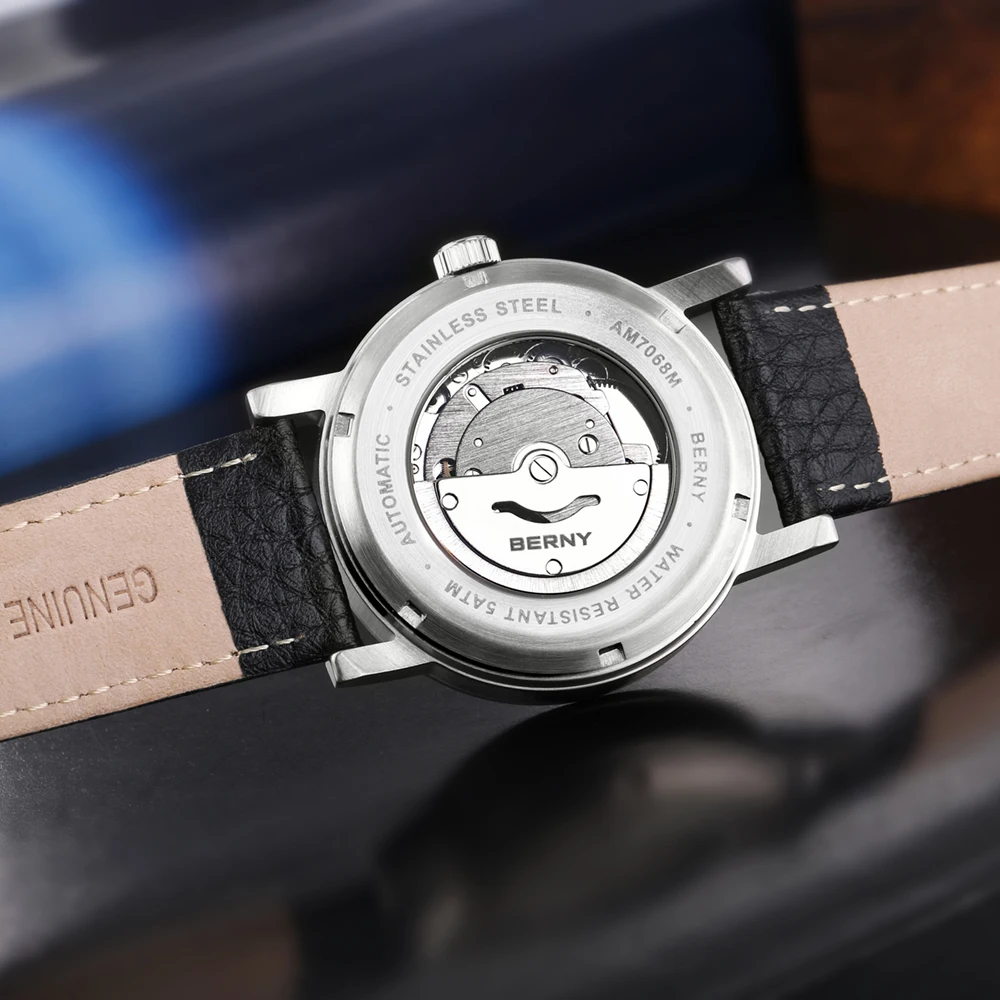
The tactical automatic watches in our collection showcase various titanium finishes designed specifically to minimize visible wear in demanding conditions.
Real-World Performance: What to Expect From Your Titanium Watch
In daily life, here’s what titanium watch owners typically experience regarding scratches:
- Desk diving marks: Light contact with desk edges and laptop surfaces will eventually leave minor marks on the clasp and bracelet
- Door frame brushes: Occasional contact with door frames typically results in superficial scratches rather than deep gouges
- Key contact: While accidental contact with keys can mark titanium, the scratches are usually shallow
- Impact resistance: Titanium tends to dent rather than crack when subjected to significant impact
Titanium watches typically age differently than their stainless steel counterparts. While steel watches often develop a collection of small, shiny scratches, titanium tends to develop:
- A more uniform dulling of highly polished surfaces
- Subtle changes in texture rather than distinct scratches
- White-appearing marks that contrast against the darker metal
- Minor scratches that become less noticeable as they oxidize
The majority of titanium scratches remain superficial due to the metal’s inherent toughness. Even when the surface shows visible marks, the structural integrity of the watch case remains excellent—one reason why titanium is favored for mastering case protection in tactical timepieces.
Expect the first few marks to be the most noticeable psychologically. Many owners report becoming less concerned about minor wear as they grow accustomed to their watch’s evolving appearance.
Maintenance and Care: Protecting Your Titanium Watch Case
Proper maintenance can significantly extend your titanium watch’s pristine appearance:
Regular cleaning removes potentially abrasive particles
– Use warm water with mild soap
– Apply with a soft microfiber cloth or soft toothbrush
– Avoid harsh chemicals that might damage gaskets or sealsPreventative measures help avoid unnecessary contact
– Be mindful when passing through doorways
– Remove your watch before activities with high scratch risk
– Consider protective sleeves for storage and travelAddressing existing scratches
– Very minor scratches sometimes become less visible after cleaning
– Brushed surfaces can sometimes be refreshed with fine abrasive pads (with extreme caution)
– Deep scratches generally require professional attentionProfessional options
– Case refinishing can restore most titanium watches to near-new condition
– This typically requires returning to the manufacturer or a specialized watchmaker
– Understand that multiple refinishings may slightly alter case dimensions over time
For those who prioritize durability in harsh environments, our collection of automatic field and military watches includes models specifically designed to withstand abuse while maintaining their appearance.
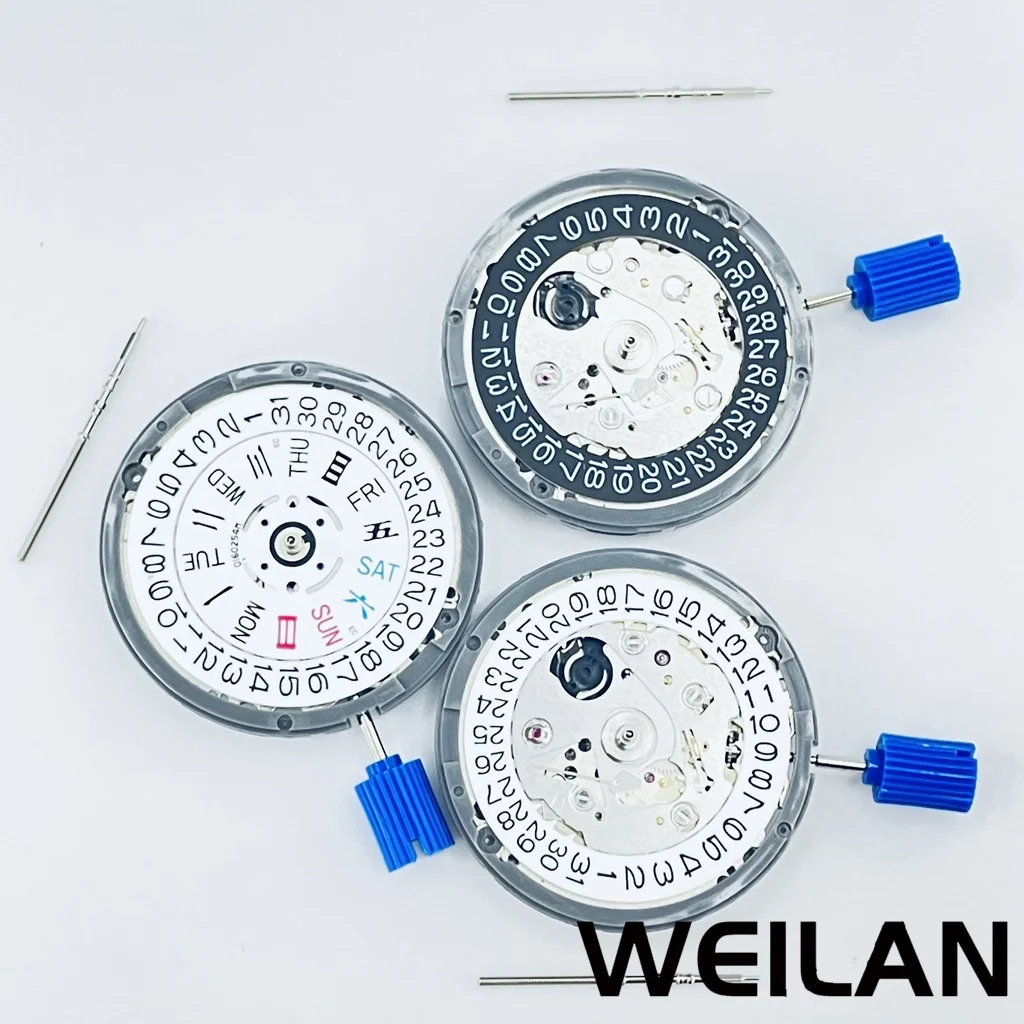
Military Inspired Automatic Watches, Rugged Automatic Watches, Tactical Automatic Watches
Price range: $852.14 through $994.60 Select options This product has multiple variants. The options may be chosen on the product pageClassic Automatic Dress Watches, Day Date Automatic Watches, Perpetual Calendar Automatic Watches
Price range: $540.60 through $574.60 Select options This product has multiple variants. The options may be chosen on the product pageAutomatic Chronograph Watches, Chronograph Pilot Watches
Price range: $233.36 through $237.58 Select options This product has multiple variants. The options may be chosen on the product pageClassic Automatic Dress Watches, GMT Automatic Watches, GMT Pilot Watches
Price range: $1,240.86 through $1,463.33 Select options This product has multiple variants. The options may be chosen on the product pageAutomatic Chronograph Watches, Classic Style Dive Watches
$3,053.06 Select options This product has multiple variants. The options may be chosen on the product pageAutomatic Skeleton Watches, Open Heart Automatic Watches
$98.36 Select options This product has multiple variants. The options may be chosen on the product page
Is Titanium Right for You? Weighing Scratch Resistance Against Other Benefits
When considering titanium for your next watch purchase, weigh these pros and cons:
Advantages of Titanium Watch Cases:
– Exceptional comfort due to lightweight properties
– Perfect for active lifestyles thanks to corrosion resistance
– Hypoallergenic properties ideal for sensitive skin
– Modern, distinctive appearance
– Impressive strength despite the light weight
Potential Disadvantages:
– Generally more susceptible to visible scratches than hardened steel or ceramic
– Premium pricing compared to standard stainless steel options
– Limited color options without additional coatings
– Can be more difficult to polish or refinish
Titanium makes the most sense for watch enthusiasts who:
– Prioritize comfort during extended wear
– Have metal sensitivity issues
– Appreciate the distinctive gray appearance
– Are willing to accept some visible wear as part of ownership
For those who cannot tolerate any scratches, ceramic-cased watches might be a better option, though they come with their own set of tradeoffs. Our diverse collection of automatic watches includes options in various materials to suit different preferences.
Common Questions About Titanium Watch Scratch Resistance
Is titanium scratch-proof?
No watch material is truly scratch-proof. Titanium can and will scratch with normal use, though certain grades and treatments significantly improve resistance.
What does “Super Titanium” mean?
“Super Titanium” is Citizen’s proprietary surface-hardened titanium that offers up to five times the scratch resistance of standard titanium while maintaining its lightweight properties.
Which watch activities cause the most scratches?
“Desk diving” (contact with desk edges and computer surfaces), doorway encounters, and contact with keys or other metal objects cause the majority of everyday watch scratches.
Is Grade 5 titanium always better than Grade 2?
For scratch resistance, yes—Grade 5 titanium is notably harder. However, Grade 2 may be preferred for certain aesthetic finishes and is typically less expensive.
Can scratched titanium be repaired?
Minor scratches in titanium can often be minimized through professional refinishing, though deep gouges may be permanent. Specialized surface treatments like DLC cannot typically be spot-repaired.
Does titanium discolor or fade over time?
Pure titanium maintains its color indefinitely. Any perceived darkening is typically due to accumulated microscratches affecting how light reflects off the surface rather than actual color change.

